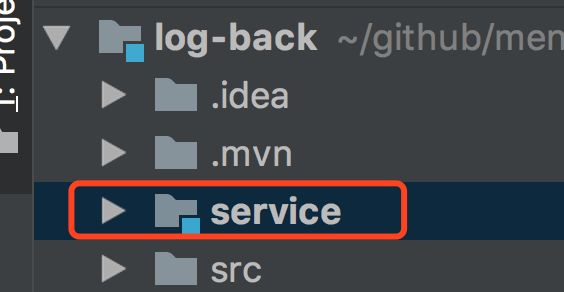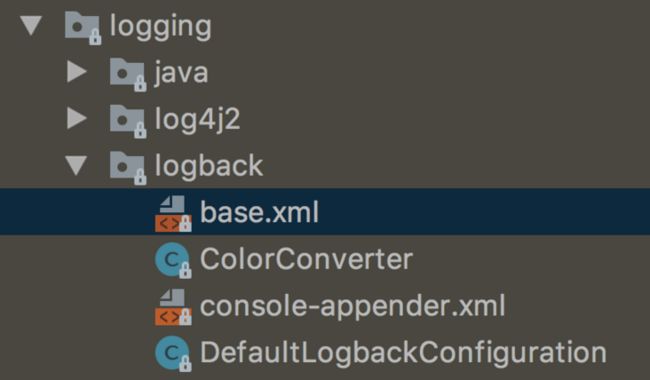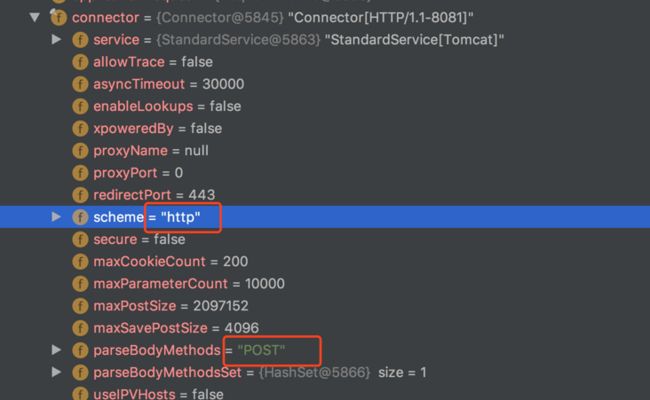当项目上线发生错误或是异常后,我们总是期望能够在第一时间内收到用户的详细反馈。当然,这也无疑会是一个非常好的提升软件质量的方法。但如果用户不愿意反馈呢?此时,我们便可以借助日志系统,比如:每隔一小时,服务器自动向我们报告一下当前的服务情况。当有错误或是警告或是异常信息时,及时向我们的报告等。
在基于上述的需求上,我们结合spring-boot内置的LogBack,来给出将warn,error信息发送到远程服务器的示例。
项目地址
https://github.com/mengyunzhi/springBootSampleCode/tree/master/log-back
开发环境: java1.8 + spring-boot:2.1.2
实现步骤
引入相关的依赖
pom.xml
4.0.0
org.springframework.boot
spring-boot-starter-parent
2.1.2.RELEASE
com.mengyunzhi.sample
log-back
0.0.1-SNAPSHOT
log-back
Demo project for Spring Boot
1.8
org.springframework.boot
spring-boot-starter-web
org.springframework.boot
spring-boot-starter-test
test
org.springframework.boot
spring-boot-maven-plugin
启动项目
控制台打印信息如下:
. ____ _ __ _ _
/\\ / ___'_ __ _ _(_)_ __ __ _ \ \ \ \
( ( )\___ | '_ | '_| | '_ \/ _` | \ \ \ \
\\/ ___)| |_)| | | | | || (_| | ) ) ) )
' |____| .__|_| |_|_| |_\__, | / / / /
=========|_|==============|___/=/_/_/_/
:: Spring Boot :: (v2.1.2.RELEASE)
2019-01-16 10:35:04.999 INFO 1571 --- [ main] c.m.sample.logback.LogBackApplication : Starting LogBackApplication on panjiedeMac-Pro.local with PID 1571 (/Users/panjie/github/mengyunzhi/sample/spring-boot/log-back/target/classes started by panjie in /Users/panjie/github/mengyunzhi/sample/spring-boot/log-back)
2019-01-16 10:35:05.002 INFO 1571 --- [ main] c.m.sample.logback.LogBackApplication : No active profile set, falling back to default profiles: default
2019-01-16 10:35:05.913 INFO 1571 --- [ main] o.s.b.w.embedded.tomcat.TomcatWebServer : Tomcat initialized with port(s): 8080 (http)
2019-01-16 10:35:05.934 INFO 1571 --- [ main] o.apache.catalina.core.StandardService : Starting service [Tomcat]
2019-01-16 10:35:05.935 INFO 1571 --- [ main] org.apache.catalina.core.StandardEngine : Starting Servlet engine: [Apache Tomcat/9.0.14]
2019-01-16 10:35:05.940 INFO 1571 --- [ main] o.a.catalina.core.AprLifecycleListener : The APR based Apache Tomcat Native library which allows optimal performance in production environments was not found on the java.library.path: [/Users/panjie/Library/Java/Extensions:/Library/Java/Extensions:/Network/Library/Java/Extensions:/System/Library/Java/Extensions:/usr/lib/java:.]
2019-01-16 10:35:06.008 INFO 1571 --- [ main] o.a.c.c.C.[Tomcat].[localhost].[/] : Initializing Spring embedded WebApplicationContext
2019-01-16 10:35:06.008 INFO 1571 --- [ main] o.s.web.context.ContextLoader : Root WebApplicationContext: initialization completed in 968 ms
2019-01-16 10:35:06.183 INFO 1571 --- [ main] o.s.s.concurrent.ThreadPoolTaskExecutor : Initializing ExecutorService 'applicationTaskExecutor'
2019-01-16 10:35:06.335 INFO 1571 --- [ main] o.s.b.w.embedded.tomcat.TomcatWebServer : Tomcat started on port(s): 8080 (http) with context path ''
2019-01-16 10:35:06.338 INFO 1571 --- [ main] c.m.sample.logback.LogBackApplication : Started LogBackApplication in 1.616 seconds (JVM running for 2.093)
配置logback
新建resources/logback-spring.xml,初始化以下信息:
启动项目,控制台打印信息如下:
10:33:41,053 |-INFO in ch.qos.logback.classic.joran.action.ConfigurationAction - End of configuration.
10:33:41,054 |-INFO in org.springframework.boot.logging.logback.SpringBootJoranConfigurator@55a1c291 - Registering current configuration as safe fallback point
10:33:41,067 |-WARN in Logger[org.springframework.boot.context.logging.ClasspathLoggingApplicationListener] - No appenders present in context [default] for logger [org.springframework.boot.context.logging.ClasspathLoggingApplicationListener].
. ____ _ __ _ _
/\\ / ___'_ __ _ _(_)_ __ __ _ \ \ \ \
( ( )\___ | '_ | '_| | '_ \/ _` | \ \ \ \
\\/ ___)| |_)| | | | | || (_| | ) ) ) )
' |____| .__|_| |_|_| |_\__, | / / / /
=========|_|==============|___/=/_/_/_/
:: Spring Boot :: (v2.1.2.RELEASE)如何判断配置成功了?
我们比较上面两个日志,第一个是没有配置logback-spring.xml,第二个是配置logback-spring.xml了。是的,如果我们发现spring 大LOG打印前,在控制台中打印了ch.qos...输出的日志信息,则说明logback-spring.xml。同时,如果logback-spring.xml起作用的话,我们还发现spring 大LOG下面,一行日志也没有了。
是的,由于logback-spring.xml对日志输出进行了控制,而配置信息中,我们又没有写任何的信息,为空。所以spring 大LOG后面当然就不显示任何日志了信息了。
查看spring-boot的默认配置
我们使用IDEA的打开文件快捷键commod+shift+o,输入base.xml,然后再使用查看文件位置快捷键option+F1来查看文件位置。更来到了spring-boot的默认配置。
上述文件,即为spring-boot的默认配置。下面,我们将以上配置引入到我们的logback-spring.xml中,来实现spring-boot的默认日志效果。
实现默认效果
复制相应的代码至logback-spring.xml中:
然后我们再次启动项目,会发现与原spring-boot相比较,在spring 大LOGO前多一些日志相关的配置信息输出,其它的信息是一致的。
实现http日志appender
appender
通过上面的注释,我们猜测:appender这个东西,能够把日志处理成我们想要的样子。
在进行官方文档的学习中,我们发现了很多已经存在的appender。与我们的需求比较相近的是SyslogAppender。
liunx有标准的syslog服务,用于接收syslog日志。
通过查询相关资料,我们获悉,此syslog服务,一身作用于514端口上。直接使用UDP或TCP协议发送MESSAGE。而我们此时想用更熟悉的http协议。所以暂时放弃。
小于1024的均为已知端口,可以通过端口号来查询对应的协议或服务名称。
第三方http appender
除了按官方的教程来写自己的http appender,还有一些比较好的第三方appender可以使用,比如:LogglyAppender。找到官方文档,并引入:
pom.xml
org.logback-extensions
logback-ext-loggly
0.1.5
logback-spring.xml
http://localhost:8081/log
测试
测试方法如图:
- 使用浏览器来访问当前项目的'/send'地址
-
send中我们加入logger。 - 再新建一个新项目,用来接收
http appender发送过来的日志。
建立测试方法
LogBackApplication.java
package com.mengyunzhi.sample.logback;
import org.slf4j.Logger;
import org.slf4j.LoggerFactory;
import org.springframework.boot.SpringApplication;
import org.springframework.boot.autoconfigure.SpringBootApplication;
import org.springframework.stereotype.Controller;
import org.springframework.web.bind.annotation.RequestMapping;
import org.springframework.web.bind.annotation.RestController;
import javax.servlet.http.HttpServletRequest;
@SpringBootApplication
@RestController
public class LogBackApplication {
private static final Logger logger = LoggerFactory.getLogger(LogBackApplication.class);
public static void main(String[] args) {
SpringApplication.run(LogBackApplication.class, args);
}
@RequestMapping("send")
public void send() {
logger.info("info");
logger.warn("warn");
logger.error("error");
}
}接收模块
新建一个spring boot项目,然后设置端口为8081。

application.propertiesserver.port=8081
ServiceApplication.java
package com.mengyunzhi.sample.logback.service;
import org.slf4j.Logger;
import org.slf4j.LoggerFactory;
import org.springframework.boot.SpringApplication;
import org.springframework.boot.autoconfigure.SpringBootApplication;
import org.springframework.http.HttpRequest;
import org.springframework.web.bind.annotation.RequestMapping;
import org.springframework.web.bind.annotation.RestController;
import javax.servlet.http.HttpServletRequest;
@SpringBootApplication
@RestController
public class ServiceApplication {
private final static Logger logger = LoggerFactory.getLogger(ServiceApplication.class);
public static void main(String[] args) {
SpringApplication.run(ServiceApplication.class, args);
}
@RequestMapping("log")
public void log(HttpServletRequest httpServletRequest) {
logger.info(httpServletRequest.toString());
}
}启动测试
使用debug模式来启动两个项目,项目启动后,打开浏览器,输入:http://localhost:8080/send,并在8081端口上的接收位置打断点。
查看断点信息:
此时我们发现两项信息,也证明数据的确是发送和接收成功了:
- 请求方法: POST
- 请求的协议:http
查看发送过来的MESSAGE
@RequestMapping("log")
public void log(HttpServletRequest httpServletRequest) throws IOException {
logger.info(httpServletRequest.toString());
BufferedReader bufferedReader = httpServletRequest.getReader();
String str, wholeStr = "";
while((str = bufferedReader.readLine()) != null) {
wholeStr += str;
}
logger.info(wholeStr);
}如下:
2019-01-16T06:06:49.707Z INFO [http-nio-8080-exec-1] org.apache.catalina.core.ContainerBase.[Tomcat].[localhost].[/]: Initializing Spring DispatcherServlet 'dispatcherServlet'是的,正如你发现在的一样,一些本来打印在8081项目上面的info信息,被发送过来了。
格式化数据
传过来的字段串,并不友好,我们接下来将其进行格式化。格式化的方法有两种:1. 发送端格式化。2. 接收端格式化。接收端的格式化的思想是按空格将日志拆分,然后要传入到格式实体的不同的字段。这里不阐述,不实现。
我们重点放在第1种,发送端使用第三方库进行格式化。
pom.xml
ch.qos.logback.contrib
logback-jackson
0.1.5
ch.qos.logback.contrib
logback-json-classic
0.1.5
logback.xml
http://localhost:8081/log
true
yyyy-MM-dd' 'HH:mm:ss.SSS
再次启动项目,访问:http://localhost:8080/send查看断点。
{ "timestamp" : "2019-01-16 14:17:54.783", "level" : "ERROR", "thread" : "http-nio-8080-exec-1", "logger" : "com.mengyunzhi.sample.logback.LogBackApplication", "message" : "error", "context" : "default"}我们发现,以前的字段串,变成的json字符串,此时我们便可以在接收端建立对应的实体,来轻易的接收了。
过滤掉INFO信息
当前虽然实现了将日志写入到第三方HTTP日志服务器,但是一些我们不想写入的,比如说INFO信息,也被写入了。下面,我们写一个过滤器,来实现只输出warn有error的信息。
新建过滤器Filter.java
package com.mengyunzhi.sample.logback.service;
import ch.qos.logback.classic.Level;
import ch.qos.logback.classic.spi.LoggingEvent;
import ch.qos.logback.core.filter.AbstractMatcherFilter;
import ch.qos.logback.core.spi.FilterReply;
import java.util.Arrays;
import java.util.List;
/**
* @author panjie
*/
public class Filter extends AbstractMatcherFilter {
@Override
public FilterReply decide(Object event) {
if (!isStarted()) {
return FilterReply.NEUTRAL;
}
LoggingEvent loggingEvent = (LoggingEvent) event;
// 当级别为warn或error,时触发日志。
List eventsToKeep = Arrays.asList(Level.WARN, Level.ERROR);
if (eventsToKeep.contains(loggingEvent.getLevel())) {
return FilterReply.NEUTRAL;
} else {
return FilterReply.DENY;
}
}
} 设置过滤器:
logback-spring.xml
http://localhost:8081/log
true
yyyy-MM-dd' 'HH:mm:ss.SSS
测试:
只接收了warn与error的数据。
统一配置
我们在logback-spring.xml定义了application.properties中呢?
定义变量
application.properties
yunzhi.log.url=http://localhost:8081/log引用变量
logback-spring.xml
${logUrl} 此时,我们便可以对logUrl在application.properties中进行统一管理了,当然了,不止如此,我们还可以在启动项目的时候,使用--yunzhi.log.url=xxx来轻松的改变日志接收地址。
总结
在整体实现的过程中,我们的解决思路仍然是:看官方文档,学官方文档,照抄官方文档。欲速则不达,有学习一门新的知识时,优先学习官方sample code,其次是官方文档。在学习的过程中,还要特别的注意版本号的问题;如何正确的快速的高效率测试的问题。
每次有日志就进行一次请求,对网络资源是种浪费。是否可以定时统一的将日志发送给服务器呢?请继续阅读spring-boot下使用LogBack,使用HTTP协议将日志推送到日志服务器(二)




